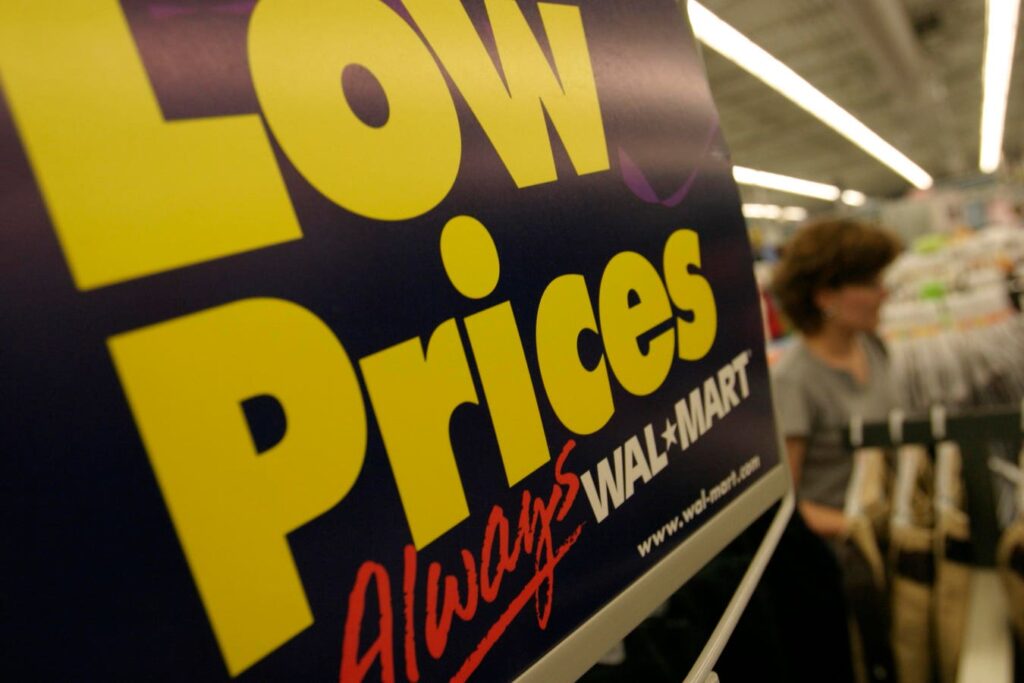Despite booming online and retail media revenue, Walmart shares are down on tariff concerns.
Walmart shares fell more than 6% on market opening this morning, as the U.S. retail giant cautioned over profit growth this fiscal year, even amid strong sales.
While Walmart has benefitted from consumers migrating towards value, jitters over the unknown impact of any potential trade tariffs with Mexico, Canada, China and Europe, plus the sharp drop in U.S. retail sales weighed on investors.
Shares opened down after Walmart said holiday-quarter revenue rose about 4% and e-commerce sales leapt 20% in the U.S., with growth in store pickup and home deliveries and increasing sales to upper-income shoppers boosting results.
However, in the fiscal year ahead Walmart said it expects net sales to grow in the range 3% to 4% and adjusted operating income to increase between 3.5% to 5.5% on a constant currency basis. The company said that includes a 150 basis point impact from its acquisition of smart TV business Vizio.
For the last fiscal year, Walmart posted adjusted operating income growth of 9.6%, although full-year adjusted earnings of $2.50 to $2.60 per share were south of the $2.76 per share Wall Street analysts had expected.
Walmart Chief Financial Officer John David Rainey put that down to nervousness around the trading environment and told CNBC that “there’s far from certainty in the geopolitical landscape”.
Walmart Tariff Concerns
No doubt he had in mind that although around two-thirds of what Walmart sells is made, grown or assembled domestically, the retailer is not immune from any potential tariffs with neighbors Canada and Mexico especially.
“We’ve lived in a tariff environment for the last seven or eight years, and we’ll do what we know how to do,” he said. “We’ll work with suppliers. We’ll lean into our private brand. We’ll shift supply where necessary to try to take advantage of lower costs that we can then pass on to consumers.”
In the three-month period that ended Jan. 31, Walmart’s net income fell to $5.25 billion, compared with $5.49 billion in the year prior period. Same-store sales increased 4.6% for Walmart’s U.S. business and 6.8% for Sam’s Club, excluding fuel, while Walmart’s e-commerce sales in the U.S. soared 20% compared with the year prior period. That marked the 11th straight quarter of double-digit gains, while global e-commerce sales rose 16%.
In the Walmart U.S. segment, customers’ store visits and purchases climbed, as transactions rose 2.8% and the average basket increased 1.8% year over year.
Walmart Retail Media Boost
Walmart’s e-commerce growth and newer initiatives worked in its favor in the fourth quarter as its advertising business and third-party marketplace posted gains and helped drive higher margins than Walmart’s traditional retail business.
Indeed, Walmart’s global advertising business was ahead 27% last year, reaching sales of $4.4 billion as the company, which was quick into retail media, benefitted from a new sales channel and the appeal of its huge customer reach.
Walmart sales were strong in its last fiscal year once again.
But it comes against the backdrop of a sharp dip in consumer spending. According to a Commerce Department report, retail sales fell 0.9% in January from an upwardly revised 0.7% gain in December, significantly worse than the Dow Jones estimate for a 0.2% decline.
With consumer spending making up about two-thirds of all economic activity in the U.S., the sales numbers indicate a potential weakening in growth for the first quarter and receipts at sporting goods, music and book stores slumped 4.6% on the month, while online outlets reported a 1.9% decline and motor vehicles and parts spending dropped 2.8%. Gas stations along with F&B establishments both reported 0.9% increases.
While Walmart could not entirely escape the wider economic storm clouds, it has in fact enjoyed strong trading as cash strapped shoppers have switched to value brands and, even with today’s stock dip, shares are up around 9% in the year to date, and a stellar 66% in the past 12 months.
Read the full article here
